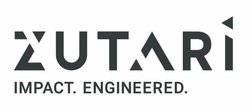Reducing the cost of wind turbine foundations
Sourcing materials for such a remote location is logistically complex, adding significantly to the total project cost. Any possible saving has a much more significant impact than the material cost alone. While NL-FEA is not intended as a mainstream design solution, it is ideal for special structures like wind turbine foundations.
Given the large number of renewable energy projects South Africa plans to have up and running within the next couple of years, optimising these at the design stage will fast-track the rollout and reduce costs.
A standard wind turbine foundation contains about 120 kg of reinforcement per cubic metre of concrete, equating to about R1.5 million of reinforcement per foundation. Using NL-FEA design to reduce the reinforcement per foundation by up to 30% for a wind farm of 30 wind turbines equates to a staggering R13.5 million saving, plus a significant reduction in the carbon footprint.
“We are trying to be more accurate in looking at prestressed or reinforced concrete structures to reduce the project risk. The result is considerable savings for both client and contractor,” says Professor van der Spuy.
Conventional FEA packages operate in the linear-elastic regime of concrete and other materials. On the other hand, NL-FEA develops accurate material models for concrete that consider softening post-yield until ultimate failure occurs.
“Rather than being conservative in our approach towards concrete structures, we aim to be more accurate,” highlights Professor van der Spuy. Concrete is a non-linear material that resists tension but endures compression. Therefore, capturing its true behaviour as a material is difficult with conventional FEA packages.
“By adopting NL-FEA instead, we can utilise the material’s true properties in a way that cannot be done otherwise in a linear method or through hand calculations, both methods that err on the side of caution,” says Professor van der Spuy.
NL-FEA dives into the heart of concrete, presenting opportunities in other areas like forensics. “Fortunately, concrete structures do not collapse that often. In such situations, we can look at the behaviour of a specific part of a structure and achieve much more accurate results than with standard methodologies,” says Professor van der Spuy.
Another application is bridge engineering, where many of South Africa’s bridges are 50, 60 and even 70 years old. Assessing these structures using conventional methods often recommends that they be demolished or strengthened as they no longer comply with modern criteria and standards. However, NL-FEA is far more refined and accurate in looking at particular sections only, preventing the entire structure from being condemned.
It is even possible to apply NL-FEA to other concrete-intensive infrastructures such as dam walls, which typically have heat problems as the concrete hydrates. “The software even allows us to model cooling pipes in concrete,” says Professor van der Spuy. Regarding wind turbine foundations, NL-FEA design can be used to tweak the geometry so that any heat build-up is dissipated toward the edges.
“It is a bit more effort from the design perspective, but the benefit is so vast from a construction perspective that additional design costs are easily offset.” Zutari is not reinventing the wheel, as a European company is already using the method for wind turbine foundation design. “We are bringing this methodology to the local market as an affordable design option with significant benefits,” concludes Professor van der Spuy.
Pull quote
“Given the large number of renewable energy projects South Africa plans to have up and running within the next couple of years, optimising these at the design stage will fast-track the rollout and reduce costs.” – Professor Pierre van der Spuy, Associate, Zutari
Social media
Non-linear finite element analysis (NL-FEA) can save up to 30% in steel reinforcement costs for concrete structures for wind turbine foundations. #Zutari #EngineeredImpact
Ends
Notes to the Editor
To download hi-res images for this news article, please visit http://media.ngage.co.za and click the Zutari link to view the company’s press office.
About Zutari
As an engineering and advisory firm, we believe infrastructure has unparalleled potential to create enduring impact. Never more relevant, this potential can be realised only if we plan, design, deliver and manage infrastructure in ways that maximise its value. Our work in water, transport, energy, resources, and built-environment infrastructure does just this – helping to nurture thriving communities, growing economies, and healthy environments.
At Zutari we understand that radical impact doesn’t just happen; it requires more of us to connect differently, work smarter, and stay rooted.
We connect differently. Our broad collective of in-house experts connects across traditional disciplines to provide integrated results. We collaborate with clients, partners, and end-users, leaning into diverse perspectives to create superior solutions - together.
We work smarter. Our people lead the industry. We draw from deep technical skills, accrued over decades, and embrace the transformative power of digital technology to find simpler, better, and more innovative ways to deliver value.
We stay rooted. Few can rival our local capacity and understanding. Building on solid foundations, now 90 years in the making, we are trusted to shape locally relevant solutions through our extensive footprint in Africa and the Middle East.
At Zutari our people connect differently, work smarter, and stay rooted. Working in this way, we reliably deliver impact through infrastructure, making the world a better place – one project at a time.
Zutari Contact
Malebusa Sebatane
Marketing & Communications Manager
Zutari
Email: Malebusa [dot] sebatane [at] zutari [dot] com
Tel: (012) 4272000
Media Contact
Rachel Mekgwe
Senior Account Executive
NGAGE Public Relations
Phone: (011) 867 7763
Cell: 074 212 1422
Email: rachel [at] ngage [dot] co [dot] za
Web: www.ngage.co.za
Browse the NGAGE Media Zone for more client news articles and photographs at http://media.ngage.co.za

